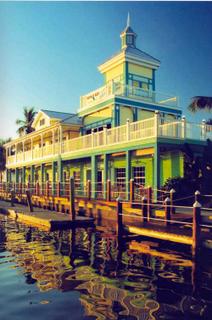Solving the Nuclear Reactor - Jellyfish Collision Problem
Jellyfish are known to clog the water-intake valves of nuclear reactors, jeopardizing effective cooling, threatening nuclear reactor overheats. Ref Ref
We discuss a solution to this problem, which may address a second.
Discussion
Some believe due to climate change, the warming sea temperatures are giving jellyfish more plankton to grow, creating an abundant food supply for jelly fish:
Jelly Fish Predators "Banner fish which are not bothered by their tentacles. Arrow Crabs gobble them up in one bite. Turtles, certain fish and snails nibble on the jellyfish's tentacles." Ref
Nuclear Reactors Could Go To A Cycle System
We discuss several approach to solving the "Nuclear Reactor - Jelly Fish Collision Problem."
Approach 1: Two layers of fences around the Nuclear Reactor.
There could be two perimeter fences, wide enough to permit a barge which would remove the jelly fish from the outer fence.
Approach 2 Sliding Screen In Front Of Intake
The screen in front of the intake could slide, on a constantly moving screen. To the side, out of the way of the intake area could be an open area for the jelly fish predators to feast on the jelly fish no longer getting sucked into the intake valve.
Approach 3 Predator Seeding
Beyond the intake valve area, the nuclear power plant could seed the ocean with jelly fish predators, preferably ones that could be harvested for food.
Approach 4 Rotating Intake Valves
Imagine a three-cycle system or rotating drum with three intake valves, all connecting to the nuclear reactor. At any given time, there could be either two (2) or one (1) intake valves connected to the intake channel.
Intake a Intake b
\ /
\ /
Rotation axis \ /
. i
i
i
Intake c
Rather than wait for the jelly fish to
build up to excessive levels, the water manifold could be daily rotated between the two intake systems, one side never exposed; and the third system would rotate out of the water to a cleaning bay.
When cleared of all debris and predators, the system would be readied for rotation to the intake cylinder.
(1) Around the water intake valves, there could be fish breeding, and special reserves for turtles.
(2) The cooling-water-intake system could have a dual manifold: Once the jelly fish reached a safe level, the intake system would slide to the second water-intake system.
(3) The jelly fish predators would be exposed to the non-used intake system, cleaning out the water intake.
The three-cylinder system would rotate around the two cylinders connected to the water; only one of the cylinders would be non-exposed to the water; and the nuclear reactor intake system could cycle back and forth between the intake valve; and the non-intake valve.
The approach above would assume that the predators could be an alternate food supply to solve the second problem: Diminishing fish stocks.
Issues:
___ Are bannerfish sufficiently meaty to warrant this approach to solving the jelly fish problem; or could the banner fish be raised only as tropical fish for exotic fish tanks?
The answer may not be the immediate fish which enjoys jellyfish, but the other predators, further up the food change, which like banner fish.
"Schooling fish like banner fish and surgeonfish are abundant plus predators like trevally, barracuda and dogtooth tuna."Ref
___ Based on current jellyfish growth rates, when will the costs for this type of retrofitting effort be cost effective?
___ Is the cost and engineering associated with this nuclear reactor retrofit more cumbersome and costly than the current method: Shutting down the nuclear reactor?
___ Is the volume of the jelly fish-build up slow enough to be solved by herding predators around the nuclear reactor; or will this herding compound the sea-water intake problem?
___ If the holding tanks for the fish live were big enough for the fish, why bother having a direct sea intake system? [If there are cooling tanks for the turtles and see to feed on the jelly fish, why would we need to worry about direct sea-water intake?]
The multi-channel intake approach may solve another problem: Oxygen intake systems also get clogged.
"Fish farms in Scotland and Shetland have seen thousands of salmon in jellyfish-clogged fish cages die from lack of oxygen." Ref
___ Could nuclear reactor maintenance personnel have a secondary-function, including fish and turtle farming?
The approach is not isolated to one ocean, but is a worldwide phenomena.
"Several Spanish beaches have had to close down this summer as the waters around the Costa del Sol, the Costa Blanca, the Costa Brava and the Balearic Islands are infested by large numbers of jellyfish."Ref



<< Home